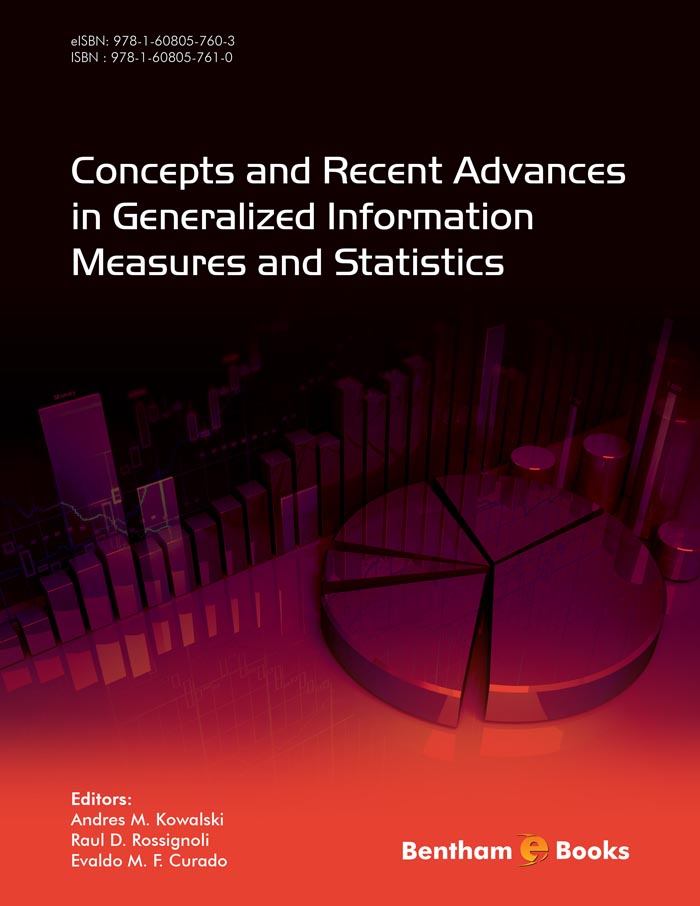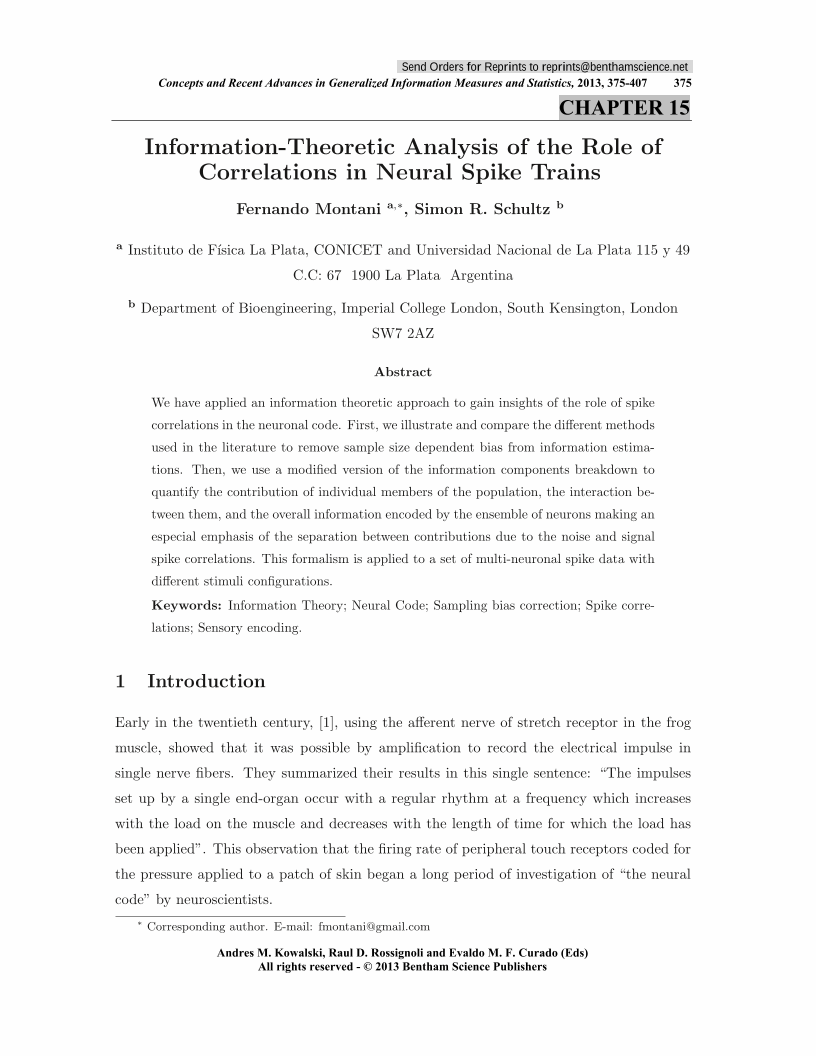Information-Theoretic Analysis of the Role of Correlations in Neural Spike Trains

- Authors: Fernando Montani1, Simon R. Schultz2
-
View Affiliations Hide Affiliations1 Instituto de F´ısica La Plata, CONICET and Universidad Nacional de La Plata 115 y 49 C.C: 67 1900 La Plata Argentina 2 Department of Bioengineering, Imperial College London, South Kensington, London SW7 2AZ
- Source: Concepts and Recent Advances in Generalized Information Measures and Statistics , pp 375-407
- Publication Date: December 2013
- Language: English
Information-Theoretic Analysis of the Role of Correlations in Neural Spike Trains, Page 1 of 1
< Previous page | Next page > /docserver/preview/fulltext/9781608057603/chapter-15-1.gif
We have applied an information theoretic approach to gain insights of the role of spike correlations in the neuronal code. First, we illustrate and compare the different methods used in the literature to remove sample size dependent bias from information estimations. Then, we use a modified version of the information components breakdown to quantify the contribution of individual members of the population, the interaction between them, and the overall information encoded by the ensemble of neurons making an especial emphasis of the separation between contributions due to the noise and signal spike correlations. This formalism is applied to a set of multi-neuronal spike data with different stimuli configurations.
-
From This Site
/content/books/9781608057603.chapter-15dcterms_subject,pub_keyword-contentType:Journal -contentType:Figure -contentType:Table -contentType:SupplementaryData105

